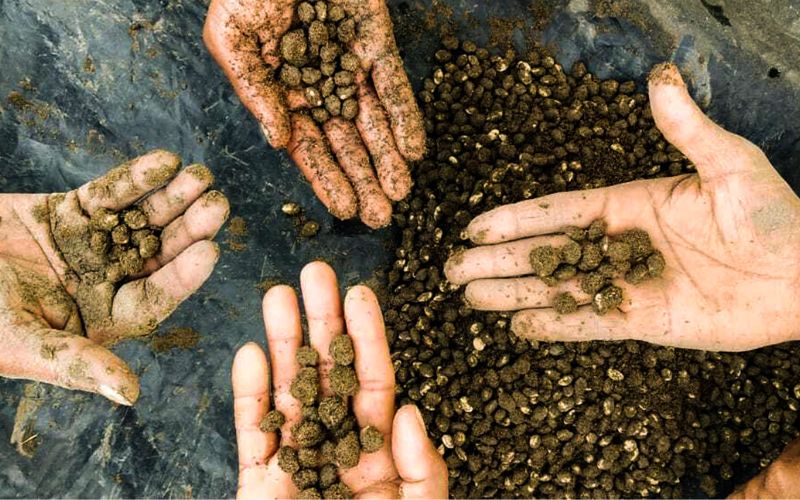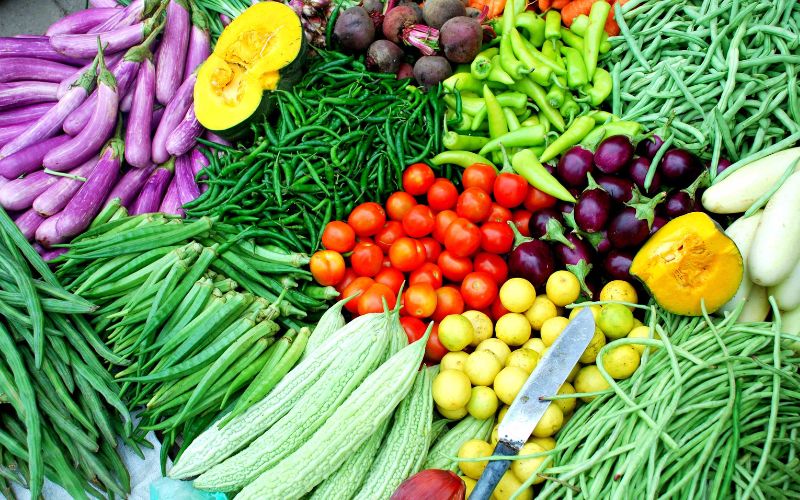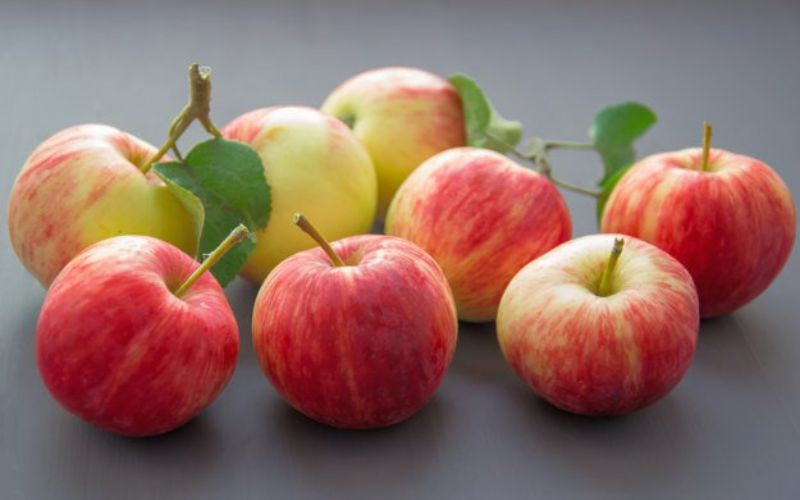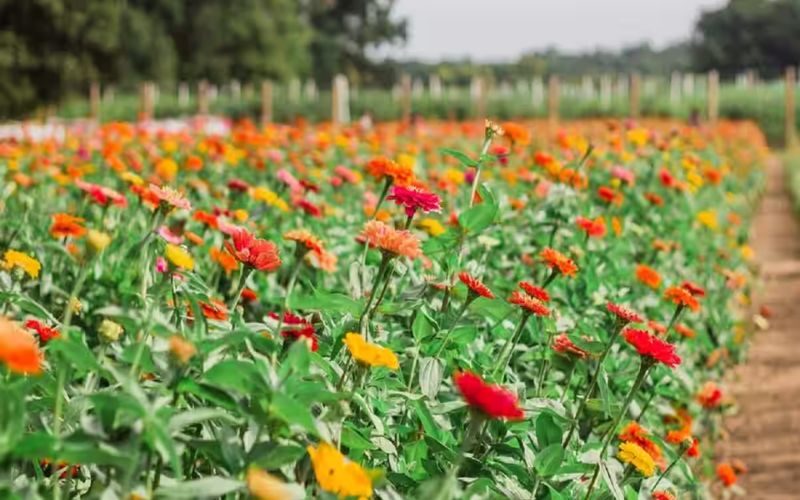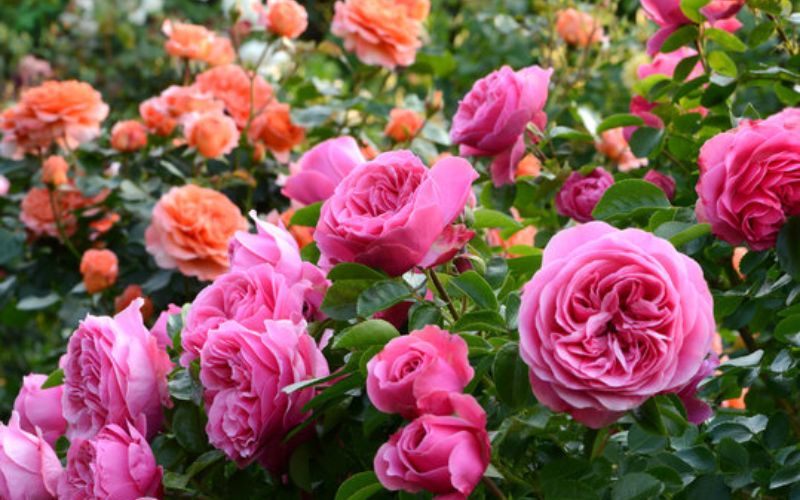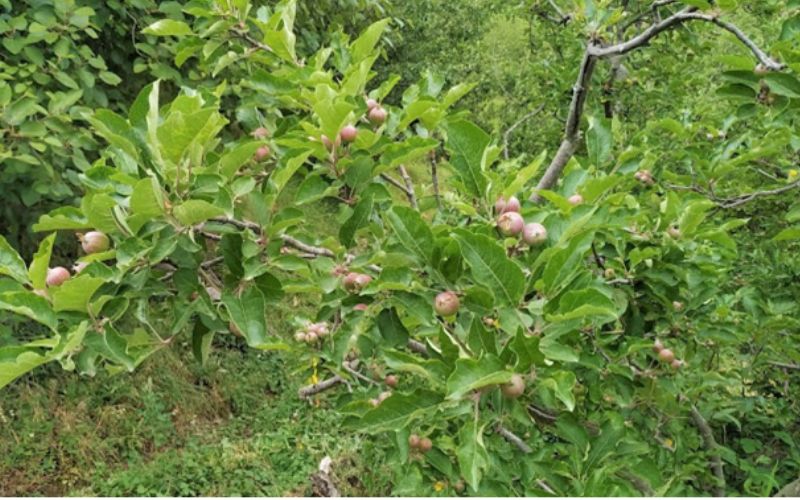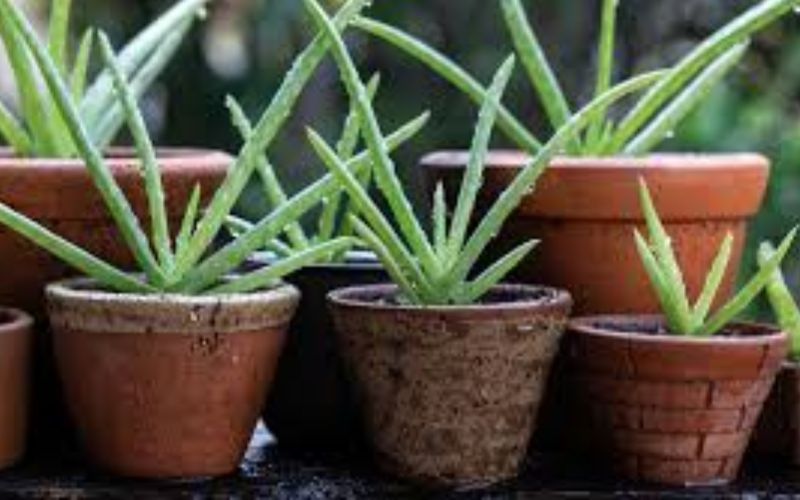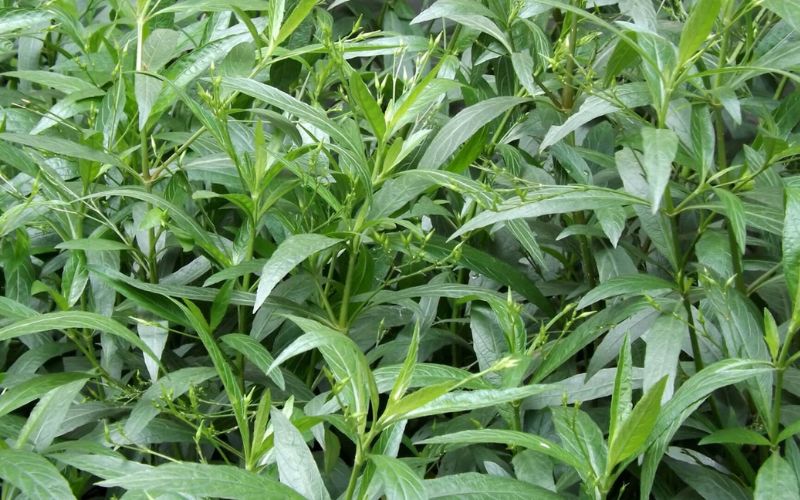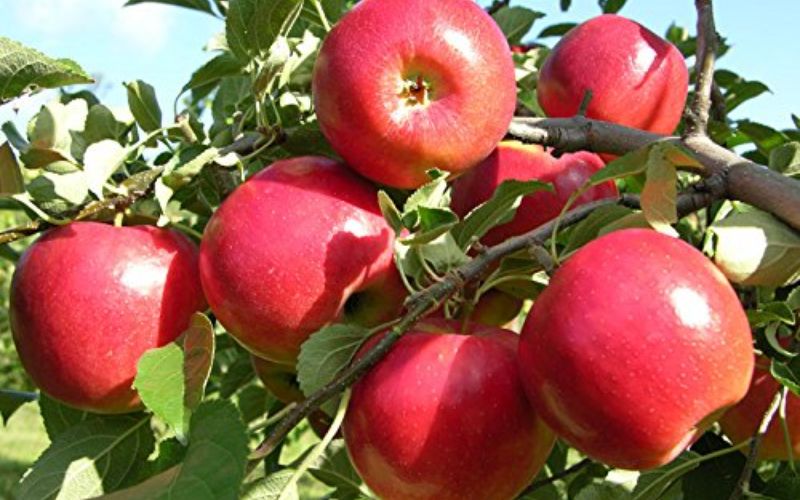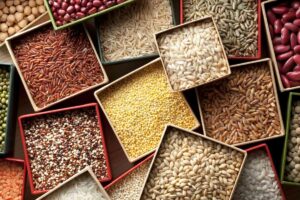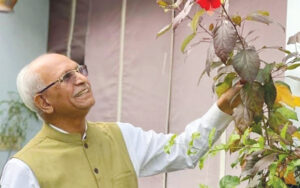Vertical Farming For Urban Beautification And Nutrition
Dr. R. V. S. K. Reddy, Dr. J. Omprasad & Dr.T.Janakiram
The world’s overall population is expected to increase by another 2 billion by 2040. Feeding such a large population will be the toughest part. Studies suggested that the Earth has lost one-fourth of its arable lands over the last 50 years mainly due to urbanization and the creation of infrastructures like roads and industries. Also, industrialization is increasing dramatically due to which many arable lands are at greater risk. Vertical farming in India is the answer to all these problems. Vertical farming is an innovative way of maintaining our farming practices. In India, vertical farming is mostly polyhouse-based farming which is a protected way that gives higher productivity and yield of vegetables and fruits across India.
Vertical gardening is basically growing ornamentals upwards on vertical surfaces, be it on the wall of a home, office, hospital or on a large facade of a building. As horizontal space is a limitation for gardening in many urban areas in the present era, the installation of a vertical garden is undoubtedly a viable option to include some greenery in the house/building. Vertical green walls can be installed along highways, expressways, metros, railway lines, airports etc. to bring down the deleterious effects of noise pollution. Vertical gardening can aid in cooling and insulation of buildings and reduces the need and cost for high voltage air-conditioning units.
A vertical farm will be defined as “A multilayer indoor plant production system in which all growth factors, such as light, temperature, humidity, carbon dioxide concentration (CO2), water and nutrients, are precisely controlled to produce high quantities of high-quality fresh produce year-round, completely independent of solar light and other outdoor conditions.” (Sharath Kumar et al., 2020)
Vertical farms are divided according to size and purpose of use (Butturini and Marcelis, 2020).
a. Plant factory with artificial lighting, an industrial-scale vertical farm located in a devoted building.
b. Container farm, a modular vertical farm contained in a shipping container.
c. In-store farm, a vertical farm located at the place of consumption or purchase (i.e., retail and restaurants).
d. Appliance farm, a vertical farm appliance integrated into a home or office.
Need for Vertical Gardening
Poor air quality has been associated with health problems throughout the world due to rapid urbanization and industrialization. Urban air pollution is a matter of global health concern. Neglecting the air pollution results in acute health risks like frequent illness, allergies, asthma, strokes, heart attacks, bronchial infection, dry eyes, sore throat, sinus, headache, cancer, cardiovascular emergencies, loss of concentration, nausea, dizziness, fatigue, skin and eye irritation and many other ailments. Vegetation can dramatically reduce the maximum temperatures of a building by shading walls from the sun, with daily temperature fluctuation being reduced by as much as 50%.
Classification of Vertical Greening System: According to the method of growing, vertical garden can be classified as green façades and green walls/living walls (Yeh, 2012).
I. Green facades II. Living walls
Green Facades
It can be anchored to existing walls or structures viz. fences/columns and it involves climbing plants or cascading vegetation (Gonchar, 2009).
i. Modular trellis panel system
The building block of this modular system is a rigid, light weight, three-dimensional panel made from a powder-coated galvanized and welded steel wire that supports plants like Asparagus sp., Pilea microphylla, Alternanthera sp., Mentha sp., Jade plant, Sedum morganianum, Portulaca sp., Dusty miller, Cuphea sp., Ophiophogon sp., Dianella tasmanica, Baby’s tear, Callisia repens etc. with face grid and panel depth (Erdogan and Khabbazi, 2013). This system is designed to hold a green facade off the wall surface so that plant materials do not attach to the building and provides a ‘captive’ growing environment for the plant with multiple supports for the tendrils and helps to maintain the integrity of a building membrane.
ii. Grid and wire-rope net system
It involves cables and wires. Grids are employed on green facades that are designed to support faster-growing climbing plants like Ivy, Trumpet vine, Clematis sp., Wisteria chinensis, Star jasmine, Bougainvillea spp., Climbing rose, Trachelospremumjasminoides, Vitis vinifera etc. with denser foliage. Wire nets are often used to support slower growing plants that need added support these systems are provided at closer intervals. Both systems use high tensile steel cables, anchors and supplementary equipment (Wong et al., 2010). Various sizes and patterns can be accommodated as flexible vertical and horizontal wire ropes connected through cross clamps.

Living Wall
A. Landscape wall
These walls are an evolution of landscape ‘berms’ and a strategic tool in an approach to ‘living’ architecture (Jacobs, 2008). Landscape walls are typically sloped as opposed to vertical and have the primary function of noise reduction and slope stabilization (Sahu and Sahu, 2014). They usually are structured from some form of stacking material made of plastic or concrete with room for growing media and plants viz. Lonicera japonica, Nephrolepis sp., Parthenocissus tricuspidata, P. quinquefolia, P. inserta, Vitis berlandieri, V. riparia, Polygonum auberti, Pyracantha sp., Selaginella sp., Wisteria chinensis etc.
B. Vegetated mat walls
It is composed of two layers of synthetic fabric with pockets that physically support plants viz. Actinidia sp., Akebia quinata, Aristolochia sp., Campsis sp., Celastrus sp., Clematis sp., Cotoneaster sp., Euonymus fortune, Hedera helix, Heuchera sp., Humulus lupulus, Hydrangea petiolaris etc. and growing media. The fabric walls are supported by a frame and backed by a waterproof membrane against the building wall because of its high moisture content (Jacobs, 2008). Nutrients are primarily distributed through an irrigation system that cycles water from the top of the system to down.

Modular living walls
A modular living wall system emerged in part from the use of modules for green roof applications, with a number of technological innovations. Modular systems consists of square or rectangular panels that hold growing media to support plant material (Ottele et al., 2010). Pepromia sp., Syngonium sp., Philodendron sp., Epipremnum sp., Begonia sp., Anthurium sp., Chlorophytum sp., Pilea sp., Rheodiscolor, Fittonia sp., Spathiphyllum sp., Schefflera sp., Zebrina pendula, Setcreasea purpurea, Nephrolepis sp. etc. are appropriate for this.

Suitable Plants for Living Wall System
Plants selected for vertical garden walls should be dense, compact, well-formed, slow-growing, evergreen with a healthy root system, attractive and graceful in appearance and appealing to the eyes. When selecting plants, a pattern of sun exposure should be taken into consideration. For creating a vertical green-wall in a sunny location drought-tolerant plants need to be selected; whereas for a shady spot or indoors or for growing under a pergola or verandah–shade loving plants should be selected.
Plants for Outdoor / Exterior Green walls
Herbaceous Perennials
• Alternanthera green
• Alternanthera sessilis
• Asparagus densiflorus
• Mentha spp.
• Duranta variegate
Shrubs
• Ficus species
• Plumbago auriculata
• Plumbago indica
• Trachelospermum jasminoides
Grass-like foliage forms
• Dianella tasmanica
• Ophiophogon
• Pandanus tectorius
• Pennisetum setaceum
• Phalaris arundinacea
Plants for Indoor Green Walls /shaded areas
Herbaceous Perennials
• Anthuriums
• Aralia
• Begonia
• Philodendron selloum
Shrubs
• Cordyline terminalis
• Ficus spp
• Rhoeo discolour
• Schefflera
• Setcreasea purpurea
Succulents
• Zebrina pendula
(Source:Praveen et al., 2020)
Green Façades
Hedera helix, Parthenocissus spp, Hydrangea petiolaris, Polygonum bauldschianicum, Lonicera spp. Clematis spp. Aristolochia spp. Jasminum officinale, Passiflora caerulea, etc.
Living Wall
Dracaena, Phalaenopsis spp, Asparagus sprengeri, Kalanchoe, Cordyline spp.Chlorophytum spp., Haworthia spp., Tradescantia sp, Fittoniaspp, Nephrolepsis, Clematis, Gardenia spp., Asplenium nidus, Maranta spp., Cotoneaster, Euonymus fortune, Hedera, Hydrangea, Lonicera, Parthenocissus, Polygonum, Pyracantha, Selaginella, Wisteria, Rose, Petunia, Nasturtiums, Daisies, Bromeliads and even some vegetables like tomato, chillies, cucumber, peas, lettuce, etc.
Exterior Wall
Lavendula, Thymus, Rosmarinus or Salvia for full sunlight while Begonia, Arum, Davallia, Asplenium and Fuchsia for shady locations.
Interior Wall
Philodendron, Epipremnum, Aeschynanthus, Columnea, Saintpaulia, Begonia or different ferns like Nephrolepis, Pterisandmany species of Peperomia.
(Source: Jain and Janakiram. 2016 )
Leafy Vegetables
Micro greens are trending to be nutritionally beneficial vegetables to the best of our knowledge and scientific data are very less as findings in this area are still in limelight. Micro greens are the leafy greens which are harvested just after the appearance of 2-3 true leaves, having a length of 2-4 cm and are harvested including stem and leaf. Average time duration for harvesting micro greens ranges between 10-14 days. For urban dwellers, sprouts and micro greens are very easy to grow and they can maintain the plants as a hobby during their free time in the available vertical space at their home by using the method of vertical gardening where land is a limiting factor. Due to their short life cycle, micro greens can be grown easily without soil and also any other pesticides and fertilizers. Various vegetable seeds can be used to grow edible young micro greens which are majorly used in fine dining restaurants for their visual and flavour component. Micro greens will be colourful; hence they can be used in garnishing their dishes by chefs and also to enhance unique favours, vivid colours and tender textures. Therefore, micro greens can be added as a new ingredient in various dishes like salad, soups and sandwiches, to enhance flavour, textures and colour.
Suitable greens
Dil, Fenugreek, Green amaranthus, Red amaranthus, Spinach (Kusumitha et al., 2021)
Vegetable Crops Suitable to Grow in Vertical Farming
Economic factors typically limit a realistic set of crops that have a small growing habit (to maximize the number of plants grown in confined spaces) that are prolific producers (such as tomatoes on the vine) and cane be fast (e.g microgreens) grown and sold. Another feature of standing crops is their dependence on the fresh market. For many reasons, processing vegetables almost always has a much lower price than their fresh counterparts. Crops compatible with vertical structure include the following:
- Tomato (Solanum lycopersicum)
Chilli (Capsicum annuum)
Brinjal (Solanum melongena)
French Bean (Phaselous vulgaris)
Bell Pepper (Capsicum annum)
Potato (Solanum tuberosum)
Cabbage (Brassica oleracea var capita) - Cauliflower (Brassica oleracea var botrytis)
Lettuce (Lactuca sativa)
Sweet Basil (Ocimumbasilicum)
Parsley (Petroselinum crispum)
Onion (Allium cepa)
Cucumber (Cucumis sativus). - (Anil Kumar et al., 2020)
Techniques Used In Vertical Farming
Hydroponics
Hydroponics is a common system of growing plants used in most forms of vertical farming and it is slowly but steadily gaining importance. It involves the growth of plants in solutions of nutrients, rather than soil -as in traditional farming In this vertical farming method, the roots of the plants are submerged in a nutrient-rich solution which is frequently circulated and monitored.
Aeroponics
This technique involves the growing of plants in an air or mist environment, with no soil and very little water. In aeroponics, seeds or seedlings are “planted” in pieces of foam stuffed into tiny pots, which are exposed to light on one end and nutrient mist on the other. The foam holds the stem and root mass in place as the plants grow. Aeroponics is considered to be one of the most efficient methods of vertical farming, as it uses over 90% less water than even the most efficient hydroponics systems. And since the nutrients are held in the water, they also get recycled. It has also been observed that the plants that are grown this way tend to take up more vitamins and minerals, which may make the plants healthier and more nutritious. The extra oxygen the plants are exposed to also results in faster growth.
Aquaponics
Another technique used in vertical farms is aquaponics. In this system, fish grow in indoor ponds and produce nutrient-rich waste that acts as a food source for the plants grown on vertical farms. The plants, in return, purify and filter the wastewater, which is recycled directly back into the fish ponds. Along with fish and plants, microbes also play an important role in converting fish waste products into useful nutrients for the plants.
Indoor vertical farming
Indoor vertical farming can increase crop yields, overcome the limited land area and even reduce farming’s impact on the environment by cutting down the distance travelled in the supply chain. Indoor vertical farming can be defined as the practice of growing produce stacked one above another in a closed and controlled environment. By using growing shelves mounted vertically, significantly reduces the amount of land space needed to grow plants compared to traditional farming methods. This type of growth is often associated with the city and urban farming because of its ability to thrive in limited space.
Vertically Integrated Greenhouse (VIG)
The VIG is structured in modules that are 40 m high. Crops are cultivated in innovative plant cable lift (PCL) systems, composed of two-wire cables looped around pulleys, driven by a computerized motor on the farming level. Shallow trays of plants, 2.0 m long, are suspended between the cables by swivelling clamps at each end. The PCL design is based on a well-established hydroponic method called the nutrient film technique (NFT). A thin film of water runs along the bottom of each tray, delivering nutrients to the roots of leafy plants, before flowing down to the next tray. The solution is recovered at the farming level for reuse. Transpiration is limited to 10% of the flow rate by design. (Sheweka and Mohamed.2012).

Advantages of Vertical Farming
1. Continuous Crop Production
Vertical farming technology can ensure crop production year-round in non-tropical regions. And the production is much more efficient than land-based farming. According to Despommier, (2010) single indoor acre of a vertical farm may produce a yield equivalent to more than 30 acres of farmland, when the number of crops produced per season is taken into account.
2. Elimination of Herbicides and Pesticides
The controlled growing conditions in a vertical farm allow a reduction or total abandonment of the use of chemical pesticides. Some vertical farming operations use ladybugs and other biological controls when needed to deal with any infestations.
3. Protection from Weather-Related Variations in Crop Production
Because crops in a vertical farm are grown in a controlled environment, they are safe from extreme weather conditions such as droughts, hail and floods.
4. Water Conservation and Recycling
Hydroponic growing techniques used in vertical farms use about 70% less water than normal agriculture and aeroponic techniques, which involve the misting of plant roots, use even less water.
5. Eco Friendly
Growing crops indoors reduces or eliminates the use of tractors and other large farm equipment commonly used on outdoor farms, thus reducing the burning of fossil fuel. Deploying vertical farms on a large scale could result in a significant reduction in air pollution and in CO2 emissions (Despommier, 2010). Furthermore, carbon emissions might be reduced because crops from a vertical farm are usually shipped just a few blocks from the production facility, instead of being trucked or shipped hundreds or thousands of miles from a conventional farm to a market. To many sustainable farming advocates, the jury may still be out on the climate-friendly claims of vertical farming. Large amounts of electricity are required to provide light and to heat and cool the enclosed growing systems, although new energy-efficient LEDs are being developed that could reduce lighting costs.
6. People Friendly
Some common occupational hazards that are avoided in vertical farming are accidents in operating large and dangerous farming equipment and exposure to poisonous chemicals.
Disadvantages of Vertical Farming
1. Land and Building Costs
Urban locations for vertical farms can be quite expensive. Some existing vertical farms are based in abandoned warehouses, derelict areas, or superfund sites, which can be more economical for construction.
2. Energy Use
Although transportation costs may be significantly less than in conventional agriculture, the energy consumption for artificial lighting and climate control in a vertical farm can add significantly to operational costs.
3. Controversy over Organic Certification
It is unclear if or when there will be agreement on whether crops produced on a vertical farm can be certified organic. Many agricultural specialists feel that a certified organic crop involves an entire soil ecosystem and natural system, not just the lack of pesticides and herbicides.
4. Limited Number of Crop Species
The current model for crops grown on vertical farms focuses on high-value, rapid-growing, small-footprint and quick-turnover crops, such as lettuce, basil and other salad items. Slower-growing vegetables, as well as grains, are not as profitable in a commercial vertical farming system.
5. Pollination Needs
Crops requiring insect pollination are at a disadvantage in a vertical farm since insects are usually excluded from the growing environment. Plants requiring pollination may need to be pollinated by hand, requiring staff, time and labour.
Food and Nutritional Security through Vertical Farming
Urban food security depends on different factors i.e.availability of food, access to food and quality of food. With urban farming, all of these factors can be improved. All cultivation methods described can have a significant contribution to communities and their families’ food security. With respect to production for self-consumption, regardless of the income level, food and nutrition security can be improved by growing food in a home or community garden (Kortright and Wakefield 2011). By implementing urban horticulture in cities of the future, a greater scale of food security could be achieved. However, to gain global food security, attention has to be paid to both urban and rural agriculture as global food security cannot be achieved with urban horticulture alone. However, urban food production on a large scale could take some pressure from rural agriculture. Urban horticulture could also help to reach a certain balance between food availability in rural and urban areas. But even with a highly developed worldwide urban horticulture, rural agriculture will keep its significance concerning global food security (Dubbeling et al. 2010).

Conclusion
Horticulture is one of the activities that play a main role in supporting human beings. Developing high-tech farming systems are the result of the energy sources and new methods of farming. A single technological strategy cannot be a panacea to the ever-growing food production system. Vertical Farming has the potential way for sustainable progress to produce food or related services in urban areas. Vertical gardening is a new field to investigate, regarding the insulation properties, durability aspects, maintenance, choice of plants suitable to the existing climatic conditions, materials involved, etc. Effects of the factors such as the physical structure, materials and dimensions of the panels, substrate type, composition, and the performance of vertical greenery systems need to be studied. Vertical farming can produce food in a climate-resilient manner, with zero pesticides and fertilizers and with lower land and water use than conventional horticulture. Vertical farming has a wider list of benefits over the other growing methods and is a better alternative to crop-growing as per the current scenario where the population is growing rapidly. Vertical farming systems currently produce a limited range of crops including fruits, vegetables and herbs, but successful implementation as a part of mainstream horticulture will require improvements in profitability, energy efficiency, public policy and consumer acceptance.


